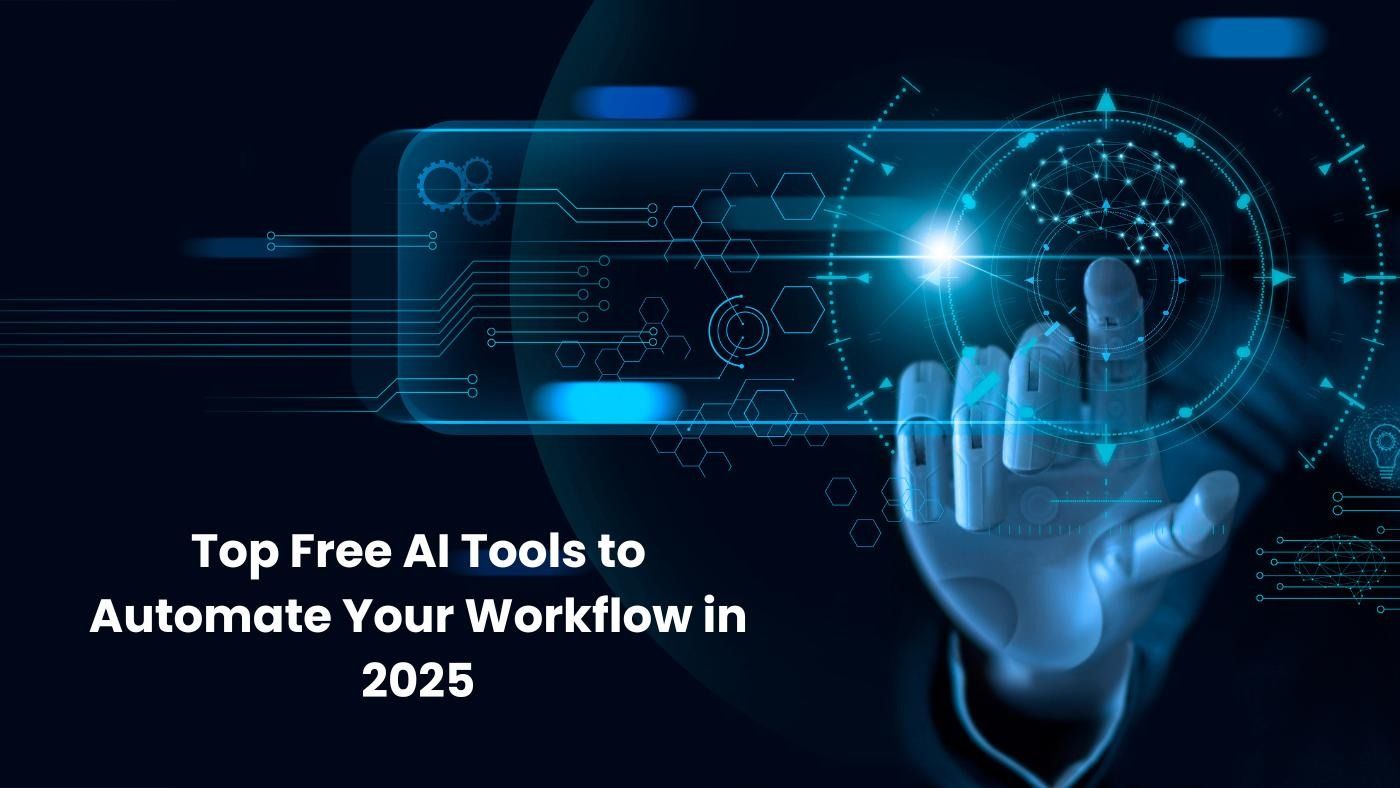

As technology continues to evolve, automation tools are becoming increasingly sophisticated. Let’s learn more about this topic below with Unicycle Hero, exploring the best options for streamlining your workflow in 2025 and beyond.
In today’s fast-paced digital landscape, businesses and individuals are constantly seeking ways to enhance productivity and efficiency. The rapid advancements in technology have paved the way for innovative automation tools that can revolutionize how we work. As we look ahead to 2025, it’s clear that automation will play an even more significant role in our daily lives and professional endeavors. This article will explore the best tools to automate your workflow in 2025, highlighting their features, benefits, and potential impact on various industries.
Workflow automation has come a long way since its inception. What started as simple task scheduling and basic data entry automation has now evolved into sophisticated systems capable of handling complex processes across multiple departments and platforms. The journey of workflow automation is marked by significant milestones and technological breakthroughs that have shaped the way we work today.
In the early days of automation, businesses primarily focused on automating repetitive tasks to save time and reduce human error. This included basic data entry, file management, and simple reporting functions. As technology advanced, so did the capabilities of automation tools. The introduction of artificial intelligence and machine learning algorithms allowed for more intelligent automation, capable of making decisions based on data analysis and patterns.
Cloud computing played a crucial role in the evolution of workflow automation. It enabled seamless integration between different tools and platforms, allowing for more comprehensive automation solutions. The rise of Software as a Service (SaaS) models made advanced automation tools accessible to businesses of all sizes, democratizing the technology and leveling the playing field for small and medium enterprises.
As we approach 2025, the landscape of workflow automation is set to undergo another significant transformation. The convergence of various technologies such as AI, IoT, and blockchain is opening up new possibilities for automation that were previously unimaginable. These advancements are not only improving existing processes but also creating entirely new ways of working and collaborating.
As we look ahead to 2025, several cutting-edge automation tools are poised to revolutionize the way we work. These tools leverage the latest advancements in artificial intelligence, machine learning, and cloud computing to offer unprecedented levels of efficiency and productivity. Let’s explore some of the most promising automation tools that are set to dominate the market in 2025.
At the forefront of workflow automation in 2025 is Unicycle Hero, a comprehensive platform that integrates seamlessly with various business applications and processes. This versatile tool stands out for its ability to automate complex workflows across multiple departments, from marketing and sales to human resources and finance.
Unicycle Hero’s strength lies in its intuitive interface and powerful AI-driven automation engine. The platform uses natural language processing to understand and interpret user commands, making it accessible even to those without technical expertise. Its machine learning capabilities allow it to learn from user behavior and continuously improve its automation suggestions and processes.
One of the key features of Unicycle Hero is its ability to create custom automation workflows tailored to specific business needs. Users can easily design and implement automated processes using a drag-and-drop interface, eliminating the need for coding skills. The platform also offers a vast library of pre-built automation templates, covering common business scenarios and industry-specific processes.
Unicycle Hero’s analytics capabilities provide valuable insights into workflow efficiency and bottlenecks. The platform generates detailed reports and visualizations, helping businesses identify areas for improvement and optimize their processes. Its predictive analytics feature can even anticipate potential issues and suggest proactive measures to maintain smooth operations.
Security is a top priority for Unicycle Hero, with robust encryption and access control measures in place to protect sensitive business data. The platform complies with various industry standards and regulations, ensuring that businesses can automate their workflows without compromising on data privacy and security.
In 2025, AI-powered virtual assistants will play a crucial role in automating personal and professional tasks. These advanced digital helpers will go beyond simple voice commands and scheduling, offering sophisticated support in various aspects of our work lives. From managing complex projects to providing real-time data analysis, these virtual assistants will become indispensable tools for professionals across industries.
These AI assistants will be capable of understanding context and nuance in human communication, allowing for more natural and efficient interactions. They will be able to participate in meetings, take notes, and even contribute ideas based on their analysis of vast amounts of data. The ability to learn and adapt to individual user preferences will make these assistants highly personalized productivity tools.
One of the most significant advantages of these AI assistants will be their ability to integrate with other automation tools and platforms. This seamless integration will allow for a more holistic approach to workflow automation, where the virtual assistant acts as a central hub for managing various automated processes across different tools and applications.
Robotic Process Automation (RPA) platforms will reach new heights of sophistication by 2025. These tools will be capable of automating a wide range of repetitive tasks across various software applications, mimicking human actions with unprecedented accuracy and speed. RPA platforms will become more intelligent, incorporating machine learning algorithms to adapt and improve their performance over time.
The next generation of RPA tools will be able to handle more complex, judgment-based tasks that previously required human intervention. They will be capable of processing unstructured data, making decisions based on predefined rules and historical data, and even learning from human feedback to improve their decision-making capabilities.
One of the key advancements in RPA platforms will be their ability to work alongside human employees seamlessly. These “cobots” (collaborative robots) will augment human capabilities, taking on routine tasks and freeing up human workers to focus on more strategic and creative aspects of their jobs. This human-robot collaboration will lead to significant productivity gains across various industries.
RPA platforms in 2025 will also offer enhanced analytics and reporting capabilities. They will provide detailed insights into process efficiency, bottlenecks, and potential areas for improvement. This data-driven approach will enable businesses to continuously optimize their automated processes and achieve higher levels of operational excellence.
As businesses continue to grapple with vast amounts of unstructured data, Intelligent Document Processing (IDP) solutions will become increasingly important in 2025. These advanced tools will use AI and machine learning to automate the extraction, classification, and processing of information from various document types, including emails, PDFs, and scanned images.
IDP solutions will go beyond simple optical character recognition (OCR) to understand the context and meaning of the content they process. They will be able to handle complex documents with varying layouts and formats, extracting relevant information with high accuracy. This capability will be particularly valuable in industries that deal with large volumes of documents, such as finance, healthcare, and legal services.
One of the key features of IDP solutions in 2025 will be their ability to learn and improve over time. As these tools process more documents, they will become more adept at recognizing patterns and extracting relevant information, even from previously unseen document types. This continuous learning capability will make IDP solutions increasingly valuable and efficient as they are used more extensively within an organization.
IDP solutions will also offer advanced integration capabilities, allowing them to seamlessly connect with other business systems and automation tools. This integration will enable end-to-end automation of document-centric processes, from initial receipt and processing to storage and retrieval. The result will be significant time savings, reduced errors, and improved compliance with document handling regulations.
As we look towards 2025, implementing automation in your workflow will be crucial for staying competitive and maximizing efficiency. However, successful implementation requires careful planning and consideration of various factors. Here are some key steps to effectively integrate automation tools into your workflow.
The first step in implementing automation is to assess your current processes and identify areas that could benefit from automation. This involves mapping out your workflows, identifying bottlenecks and repetitive tasks, and determining which processes are most suitable for automation. It’s important to involve key stakeholders from different departments in this assessment to ensure a comprehensive understanding of the organization’s needs.
Once you’ve identified potential areas for automation, the next step is to set clear goals and objectives. What do you hope to achieve through automation? Are you looking to reduce costs, improve accuracy, increase productivity, or enhance customer satisfaction? Having clear objectives will help guide your automation strategy and measure its success.
Choosing the right automation tools is crucial for successful implementation. With the plethora of options available in 2025, it’s important to select tools that align with your specific needs and integrate well with your existing systems. Consider factors such as scalability, ease of use, customization options, and support when evaluating different automation solutions.
Implementing automation often requires changes to existing workflows and processes. It’s important to prepare your team for these changes and provide adequate training on the new tools and processes. Clear communication about the benefits of automation and how it will impact individual roles can help overcome resistance and ensure smooth adoption.